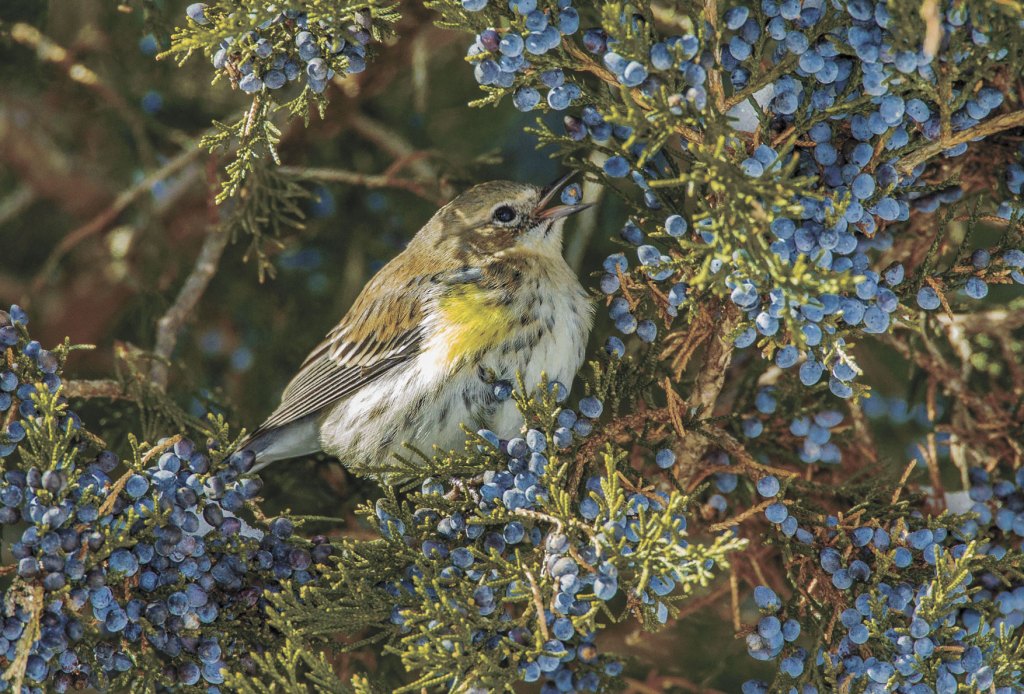Master Gardeners: Attracting birds to your backyard
Published 12:40 am Friday, July 30, 2021
|
Getting your Trinity Audio player ready...
|
By Sheri Bethard
Orange County Master Gardeners
Want to attract more birds to your backyard? Start by growing berry bushes for the birds in your landscape. Birds love to eat the berries!
There’s something inspiring about seeing a flock of Cedar Waxwings in the winter suddenly settle into your American Holly tree plucking every berry within reach, gulping the fruits down one quickly before leaving as fast as they arrived. Not only are berries among the most natural and essential food sources for birds, they’re also easy to grow. You don’t have to be much of a gardener to grow berry bushes for birds!
Take a look at the top picks for berry bushes that attract backyard birds. From one birder to another, I hope this advice allows you to simply plant, walk away and then get your binoculars ready to enjoy the view.
American Beautyberry Bushes, Callicarpa Americana, Zones 5 to 9
One of the most notable characteristics of a beautyberry shrub is the purple or white berries growing in clusters very close to the stem. American beautyberries reach only 3 to 5 feet tall, which is perfect for small spaces. The fruits are attractive to many birds: mockingbirds, robins and brown thrashers.
Coralberry, Symphoricarpos Orbiculatus, Zones 2 to 7
In summer, enjoy coralberry’s bell-shaped pinkish white blooms, are said to be particularly attractive to bees. Come fall, clusters of red berries emerge. They’ll persist throughout winter until songbirds like cardinals, chickadees and robins devour them. This berry bush is compact, reaching 3 to 5 feet tall and 3 to 6 feet wide, and a fast grower. Plus, it is a good plant for shady areas.
Dogwood, Cornus, Zones 5 to 9
Several species are native to North America, and over 40 kinds of birds have been documented eating their berries. It is neat to watch the gray catbird, whose long tail and stubby wings are perfectly suited for flying through dense dogwood thickets. The plant is available as either a small tree or a bush.
Holly, Ilex, Zones 5 to 9
What’s more festive than holly’s bright-red berries clustered among dark-green leaves? Although the fruit can be mildly toxic and irritating to humans, birds seem to have no problem with it. Research suggests the berries lose some of their toxicity after the first frost, which is when birds tend to chow down on them. Another thing to know about these berry bushes: It’s dioecious, meaning you need to have both male and female plants to ensure that fruit will be produced.
Juniper, Juniperus, Zones 3 to 9
Any of the juniper species can offer double benefits for birds, providing good cover and choice nesting locations as well as fruit. While they’re less appealing to some other birds, they still offer valuable winter nutrients. And for the gardener, these hardy berry bushes require little maintenance.
Red Chokeberry, Aronia Arbutfolia, Zones 4 to 9
Growing 6 to 12 feet tall, this resilient native berry bush does well even in poor soil, tolerating wet and dry conditions. It has small white or reddish blooms in spring, glossy dark green foliage in summer and bright red berries in fall and early winter. Besides the berries, reddish brown bark boosts color within a cold-weather landscape.
Viburnum, Viburnum, Zones 2 to 9
With around 150 different species, this is a versatile choice for your backyard berry patch. These shrubs can do well clumped as a hedgerow. They also make a good transition species at a forest’s edge. The berries are favorites of both birds and larger wildlife.
Plant any of these choices, and watch the show begin! A Northern Mockingbird will vigorously defend a berry patch to hoard the pickings, enjoying them at a leisurely pace.
Yaupon Berry Bush, Ilex Vomitoria, Zones 7 to 10
This evergreen berry bush forms a dense thicket ideal for a screen, hedge, windbreak and barrier. It can be espaliered or trained as a small tree or topiary. The red berries brighten the winter landscape and provide food for birds. Female plants need a male pollinator in order to produce fruit. The shrub’s adaptability along with drought and disease tolerance make it a long-living native alternative to boxwood.
For your horticulture questions, please call our Hot-Line 409 882-7010 from 10 a.m. – 2 p.m., Tuesday and Thursdays or email us at ocmg@gmail.com
We have 2 FREE programs scheduled for Aug 7, make your own decorator pot and Aug 21, make a hypertufa planter and Kokedama (Japanese Moss Ball). To register, please email ocmg@gmail.com. These will be held at Cormier Park, 8235 FM 1442, Orangefield (where the plant sale is).
Our next Master Gardener certification class will start Thursday, Aug. 26 and continue weekly thru Dec. 9, 2021. Classes will be from 6 p.m. – 8/8:30 p.m. at the Orange County EXPO Center. There will be some Saturday classes and fieldtrips. Fee to the class is $150 which includes your training/handbook, supplies and speakers’ fees. For more information, please check our website https://txmg.org/orange




